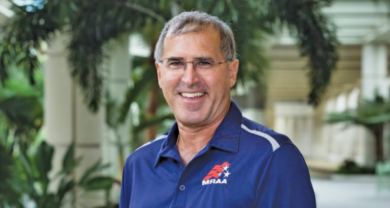Boat repair shop finds solution for clogged carburetors

Eric Peterson, the owner of Specialty Marine, a boat repair and marine engine repair shop in Oxnard, Calif., chose to quit his day job as an air quality engineer.
He now spends his time near the water working on boats of all shapes and sizes.
Dirty carburetors mean dead engines
One of the most common things that Specialty Marine sees in the early spring are boat engines with clogged carburetors. The reason for this is that in the off season, where boats can sit unused for months on end, left over fuel can mix with water. The result of this mixing is a gummy mess that clogs the ports of the carburetor and prevents the boat engine from getting enough air. No air means no combustion, which means a dead boat.
Cleaning carbs the old way
The old method that Specialty Marine employed to clean carburetors involved solvents and high pressure air. The mechanics would spray harsh chemical solvents into each of chambers and allow them to dissolve the residue. Once this was done, high pressure air would be blown in while the carb was held over a trash can or bag.
This method caused several problems, Peterson says:
- Harsh and caustic aerosols can not only damage the environment but, also, hurt mechanics
- Back spray could end up in mechanics eyes or mouths, causing injury
- The method wasn’t guaranteed to work and might need to be repeated several times to get the carburetors fully clean.
Now, Peterson has instead opted for ultrasonic cleaning. He purchased a 7.75 gallon table top unit, which did the work in no time flat, he says. Parts came clean without harsh chemicals and were done the first time. Ultrasonic cleaners are a better, safer and more thorough way to get the job done, Peterson said.
To find out more about Omegasonics and how ultrasonic cleaning technology works, visit www.omegasonics.com.
To find out more about Specialty Marine, visit www.specialty-marine.com.





